Apple Watch 7 vs. Galaxy Watch 5: The one watch to rule them all (for now)
It's Apple vs. Samsung in this smartwatch duel. Find out who will come out on top.
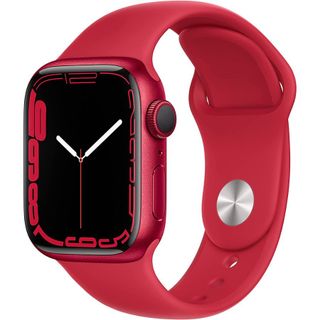
Apple's best smartwatch ever
The Apple Watch is one of the most prolific Apple devices around. You'll find one on many a wrist, buzzing and blipping as the owner receives texts and calls. It'll stream audio to Bluetooth headphones and track exercise and sleep when worn. The Apple Watch Series 8 could be on the way soon, but the Series 7 is still the best Apple Watch you can buy — but is it the best smartwatch?
For
- Awesome larger display
- Faster charging
- All-day battery life
- Easily interchangeable bands
Against
- No new health features
- Limited upgrade over Series 6
- Expensive
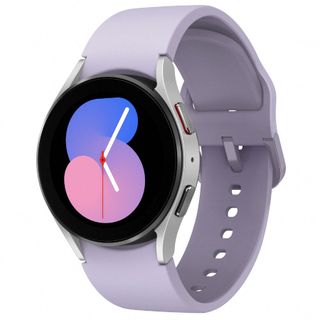
Samsung's latest contender
The Galaxy Watch 5 is Samsung's latest entry into the smartwatch space and brings some extra goodies for an excellent price. There's a bigger battery on board, along with the latest version of Wear OS with Samsung's One UI over the top. It'll be released on August 26, but preordering gets you some great additions, like a free Wireless Charging Duo.
For
- More battery life
- New Sapphire Crystal display
- Cheaper than Apple Watch
Against
- Loses the rotating bezel of the previous Classic model
- The round form factor makes apps trickier than on Apple Watch
- Doesn't work with iPhone
It's (almost) one of the biggest battles of the year: Samsung has announced its latest line-up of smartwatches, including the Galaxy Watch 5. It looks to upgrade its predecessor in a few key ways — battery life, durability, and health tracking. It's not out yet, so we haven't been able to have a proper play with it, but we're still stacking it up against our favorite current smartwatch: the Apple Watch Series 7.
The Series 7 was a marginal update over the Series 6, bringing some extra screen space and a brighter always-on display. At the moment, we think it still beats out the Galaxy Watch offering in a few key areas, but it's closer than ever. Honestly, though, it really comes down to which platform your phone runs on — for iPhone users, the Apple Watch is the clear winner — while the Samsung offering won't work with your iPhone. For Android users, the picture becomes a little fuzzier. While we'd still say the Apple Watch is more feature-packed and nicer to use, the Galaxy Watch is more closely related to the Android system, bringing more ways to interact with your watch with an Android handset.
So, if you're in the market for a smartwatch, it's likely you're looking at either the Apple Watch 7 or the new Galaxy Watch 5 — here's why we think the Apple Watch Series 7 just ekes it out over the Samsung option.
Apple Watch 7 vs. Galaxy Watch 5: Screen and usability
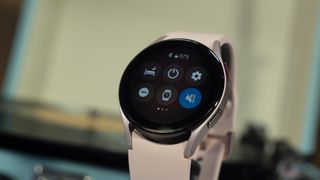
Both of these devices have small screens; they have to fit on a wrist after all. Only one of them has the most usable screen, however.
The Samsung Galaxy Watch 5 has a screen that is fine. Our colleagues at Android Central got to have a hands-on play at the launch event and report that it's bright, crisp, and, crucially, round. This roundness makes the watch more like your traditional watch in appearance, but also makes it trickier to use. See, we as cell phone consumers are used to tapping and swiping on a square or rectangular screen, making some of the gestures required for a circular screen feel unnatural.
Unfortunately, this year, one of the best features of the round screen is gone. Last year's Galaxy Watch 4 Classic had a really handy rotating bezel, much like what you'd find on a Rolex or other classic timepiece that you could use to navigate menus and interact with certain apps. With this year's line-up, it isn't even an option. Instead, you have to use an interactive part of the outer bezel that's a stationary touch sensor, making using it both less satisfying and more difficult when you're on the move. It will be sturdier than previous models, however, with Samsung claiming the new Sapphire Crystal glass is 60% stronger than those that have come before.
| Header Cell - Column 0 | Apple Watch Series 7 | Samsung Galaxy Watch 5 |
|---|---|---|
| Display | Ion-X Strengthened glass with Retina | Sapphire Crystal with Super AMOLED |
| Outer material | Aluminum frame with sapphire crystal back | Aluminum case |
| dimensions | 45 x 38 x 10.7 mm | 44mm: 43.3 x 44.4 x 9.8 mm 40mm: 39.3 x 40.4 x 9.8 mm |
| Processor | S7 64bit dual core | Exynos W920 Dual-Core 1.18GHz |
| Memory | 1GB RAM | 1.5GB RAM |
| Storage | 32GB internal | 16GB internal |
| OS | watchOS 8.7 | WearOS 3.5 with One UI Watch 4.5 |
| Sensors | Accelerometer, gyro, heart rate, barometer, always-on altimeter, compass, SpO2, VO2max | Samsung BioActive Sensor (Optical Heart Rate + Electrical Heart Signal + Bioelectrical Impedance Analysis), Temperature Sensor, Accelerometer, Barometer, Gyro Sensor, Geomagnetic Sensor, Light Sensor |
| Connectivity | GSM / HSPA / LTE, Bluetooth 5.0, Wi-Fi 802.11 b/g/n | LTE29, Bluetooth 5.2, Wi-Fi 802.11 a/b/g/n 2.4+5GHz, NFC, GPS |
| Compatability | iOS 15 or higher | Android 8.0 or higher |
| Battery life | Up to 18 hours | Up to 40 hours |
The Apple Watch wins in the screen department. For one, it's a more conventional squared-off shape, and although it has rounded corners, it feels like there's more usable screen real estate on offer. Apps look and feel better to use, and the tiny little app icons in the app drawer are easier to hit. Swiping around the Apple Watch feels more natural and easier, as well as bringing Apple's bright always-on retina display to your wrist. We have yet to compare them side by side, but the Apple Watch's screen certainly feels and looks more premium when viewed in a vacuum.
One of the best features of the Apple Watch is the digital crown on the side. It's a fantastic way of interacting with the watch, letting you swipe through app screens and watch faces without having to put your greasy, sweaty exercise fingers on your screen. The Apple Watch 7, therefore, with its extra physical method of interacting and nicer screen to use is, to us, the winner of the screen and usability section.
Apple Watch 7 vs. Galaxy Watch 5: OS and UI
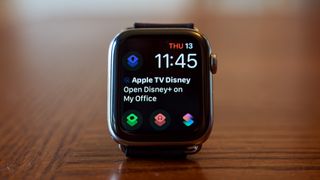
The Samsung Galaxy Watch 5 and the Apple Watch use two totally different operating systems. The Apple Watch uses watchOS, Apple's own operating system that's been around since the original Apple Watch launched in 2015, which remains, bar some updates, very similar visually. On the other hand, Samsung is using Google's Wear OS, which it only adopted with the Samsung Galaxy Watch 4 last year. While Samsung has printed its own UI over the top, the snappily named, One UI Watch 4.5, it's still a relatively new OS to the company.
The Apple Watch and Watch OS are now very mature. Gestures are simple and intuitive, with few movements needed to get exactly where you want to go. The icons, while small, pan around the screen and become bigger in the app drawer when they are centered on the screen, becoming bigger to make them easy to hit. It's full of things and small details that show that Apple has had a long time to come up with ways to make the watch as easy to use as possible. Toss into the mix the digital crown, and the Apple Watch has one of the best UIs in the business. It's slick, smooth, and simple.
It's also uncommonly customizable. Its mostly located on the face of the watch, letting you customize the look and feel of the watch when telling the time. You can add tiny widgets to the screen, called complications that track things like fitness goals and sleep schedule. The clock could be analog or digital, with different fonts and numerals to tell the time. They're small things, like the usability quirks, but they make the watch feel both premium and personal.
Wear OS has been behind for a long time now, and while it's catching up, it's not on the heels of watchOS quite yet. There are too many swipes required for certain actions and strange UI decisions all over the place. With last year's Galaxy Watch 4, it was improved slightly by the addition of Samsungs One UI, but even then, it wasn't up to the competition. The Galaxy Watch experience, going by prior years, isn't bad but it's not as good as the Apple Watch.
Apple Watch 7 vs. Galaxy Watch 5: Health and exercise tracking
One of the main reasons customers buy a smartwatch is its ability to track various useful metrics. From step counting to blood oxygen levels and even the ability to generate ECGs, both watches have some brilliant features for those looking to track their health. One, however, has a year of extra features to pack in.
The Galaxy Watch 5 packs in some really impressive sensors under its hood. There's Samsungs BioActive sensor, covering optical heart rate, electrical heart signal, and bioelectrical impedance analysis, and then a temperature sensor, accelerometer, and barometer. These may not mean much to you, but together, they make Samsung's latest watch a handy little device.
The BioActive Sensor will measure heart health while giving accurate information about blood oxygen and heart rate while exercising. This is the sensor that will provide feedback on sleep tracking and give you a picture of your health in what Samsung calls "holistic health insights." The other sensors will count steps and even measure how much you've been sweating and how much more you need to hydrate. Will it get annoying if your watch keeps telling you to have a drink? Maybe. But it's very cool.
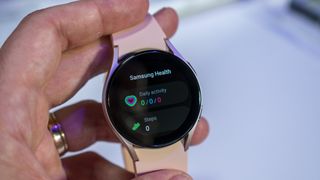
The new sensor is the temperature sensor that Samsung wants to talk about — it will measure body temperature separately from ambient temperature, allowing app creators more ways to measure the body. What will this mean? More variables to give you those "holistic health insights," presumably.
The Apple Watch has much the same in regards to sensors — it'll measure heart health and heart rate, as well as blood oxygen and step count. What it doesn't have is that cool temperature sensor. For all intents and purposes, you'll find much the same as the Galaxy Watch 5 in regards to health readouts. They'll just be, you know, less "holistic." For that extra sensor, the Galaxy Watch wins out in this round.
Apple Watch 7 vs. Galaxy Watch 5: Battery life
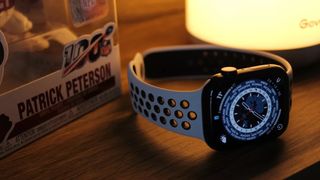
Battery life is hugely important for a smartwatch. You're going to be wearing it daily, using the features you need, and draining its little lithium-ion cell as you go. This is the section where things get messy.
The Apple Watch claims that it'll last for 18 hours, and in our review, we found that claim was fairly accurate, reaching the end of the day with a little battery left over. Charging-wise, it's very quick, juicing up to 80% in as little as 45 minutes. In fact, with only eight minutes of charging, it'll give you up to eight hours of sleep tracking. The battery on the Apple Watch Series 7 is by no means class-leading, but it'll happily get you through the day.
Samsung claims that the Galaxy Watch 4 was good for 40 hours, and the Watch 5's battery is even bigger, with a 15% increase in charge. What does this mean? At the moment, not very much. The Galaxy Watch 4's battery life was generally nowhere near that 40-hour estimation, and we're still yet to test whether the Galaxy Watch 5 is similar. It'll also charge in eight minutes for eight hours of sleep tracking, matching the Apple Watch. Going by claims, the Galaxy Watch takes the crown of battery life, but it may have to abdicate if reviews prove those claims wrong.
Apple Watch 7 vs. Galaxy Watch 5: Price
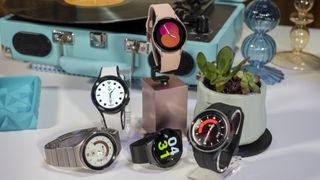
This is an easy one — or so it may appear. Is it all down to which is cheaper and which is more expensive?
Yes. The Galaxy Watch is $329 for the LTE version and $279 for the Bluetooth version. That's a lot cheaper than the Apple Watch 7, where you'll be charged $379 for the GPS version in its smallest size and then up for the bigger screens and the cellular model. The Galaxy Watch is cheaper, and there's not much you can do to get around that.
Except you can, often. The Apple Watch Series 7 has been out for almost a year now, and thus frequently comes down in price to comparable price points. The 41mm Apple Watch GPS model's lowest price has been $329 — the same as the LTE Samsung watch. If you want to stay up to date with the best Apple Watch prices, then make sure you have a good look over the best Apple Watch deals and sales. Is the Apple Watch worth it? We'd all say yes, but we all own the best iPhones too, so we would.
In the end, the Galaxy Watch wins out on price. But it was closer than you might think.
Apple Watch 7 vs. Galaxy Watch 5: Durability
It's two for two — the winner here will decide the winner overall. Is this closer than we thought? Yes. Also, consider that this is a brand new device up against one that's a year old. With the release of the Apple Watch Series 8 later this year things may look a little different. Durability is the final round. How sturdy are these two watches? You want a sturdy watch because unlike your phone that's sat in your pocket, your watch will see far more of the outside world, mounted on your wrist. You'll want the strongest materials, especially on that touch screen.
The Samsung Galaxy Watch 5 has an aluminum case, with a Sapphire Crystal glass coating over the watch face. Samsung's strap is replaceable, but there are far fewer options than the Apple Watch out there to slip in its place.
The key feature is that Sapphire Crystal display. It's harder than other materials, so it won't scratch but it is far more likely to crack should it be knocked against a table or bus seat frame. We're not sure how this glass will perform, given it's a new feature to the Galaxy Watch 5, but it sounds nice. That screen, however, is proud of the case — it's the first thing that's going to hit anything. Whatever it's made out of, you'll be getting a screen protector.

The Aluminum Apple Watch uses Ion-X strengthened glass. This is more likely to scratch than it is to crack, given its softer glass. The stainless steel option of the Apple Watch Series 7 comes with a Sapphire Crystal display and has proved itself as a very sturdy option. That stainless steel is also very durable, faring better than the aluminum of the lesser model — and, likely the Galaxy Watch 5. You'll have to pay more for the privilege, but you'll get the more durable watch when you buy Apple's. Still, though, it doesn't hurt to buy some great screen protectors and cases just to be on the safe side.
Apple Watch 7 vs. Galaxy Watch 5: Which should you buy?
Ok, so it was far closer than we thought it might be. The Apple Watch wins out, however, in some very key areas. Its stainless steel option is more durable, and watchOS has a more usable UI than the combination of Wear OS and One UI on the Galaxy Watch.
This Versus is good at showing the key areas where Apple needs to improve the Series 8. Better battery life is one of the key areas. If a watch that's so much cheaper can offer that much extra battery life, then Apple needs to step its game up. Price too, Apple needs to work on. Again, if a watch that's that much cheaper can come this close to beating the Apple Watch, then Apple will have to offer even more features to make the price continue to make sense.
Of course, this comparison could completely change in a couple of months as Apple is set to unveil the Apple Watch 8. We have an idea of what to expect from the Apple Watch Series 8, and it looks like it could be a larger upgrade over the Series 7 than previous updates. It will be interesting to compare the latest Apple Watch to the Galaxy Watch 5, but until then, we'll make do with the current model Apple Watch.
The biggest takeaway is a big one, which almost makes the comparison moot. If you've got an iPhone, you'll be buying an Apple Watch. You can't use the Apple Watch without one. Similarly, if you want all the features of the Galaxy Watch, you'll need a Samsung phone. Yes, the Apple Watch may be the better watch, but you won't be able to use it with a Samsung phone and vice versa. If just one of these manufacturers was to make their product compatible with the others' phones, they could have a winner on their hands — but until then, we're left saying, "These are the best smartwatches. Shame you won't be able to use them without the correct corresponding hardware".
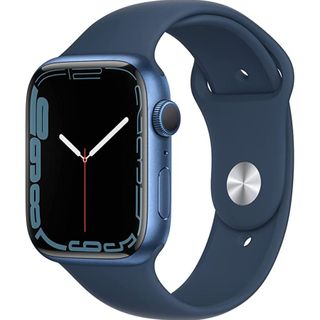
The best
As discovered, the Apple Watch is one of the best smartwatches you can buy. It goes without saying that it's perhaps the only option for iPhone users, and thankfully the one choice is a good one. Just, you know, maybe see what extra goodies the Apple Watch Series 8 brings...
Master your iPhone in minutes
iMore offers spot-on advice and guidance from our team of experts, with decades of Apple device experience to lean on. Learn more with iMore!

As iMore's Senior Staff writer, Tammy uses her background in audio and Masters in screenwriting to pen engaging product reviews and informative buying guides. The resident audiophile (or audio weirdo), she's got an eye for detail and a love of top-quality sound. Apple is her bread and butter, with attention on HomeKit and Apple iPhone and Mac hardware. You won't find her far away from a keyboard even outside of working at iMore – in her spare time, she spends her free time writing feature-length and TV screenplays. Also known to enjoy driving digital cars around virtual circuits, to varying degrees of success. Just don't ask her about AirPods Max - you probably won't like her answer.

